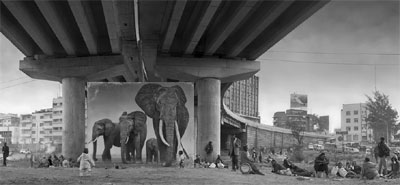What’s the most important step governments can take to combat climate change?
Surprisingly, building codes in developing countries are #1 for Faith Birol, Executive Director of the International Energy Agency.
Developing countries are where growth is concentrated and if all buildings going up aren’t extremely efficient, we’ll be locking in high greenhouse gas emissions for decades, she told The Guardian.
This can be done through regulations and incentives fairly easily but enforcement may take longer, he says, pointing to the often lax standards in many countries.
In the US, for example, a home built to 2012 codes uses about half the energy as one built in 1975, and there’s room for even more efficiency, says Natural Resources Defense Council (NRDC).
Not only would they consume less energy, buildings would be much safer from disasters and more comfortable for occupants as the world warms. Birol also calls for more incentives for electric vehicles and for carbon capture in order to meet the Paris Climate Agreement goals.
Luckily, green buildings are now the preferred choice around the world, with the number doubling every three years, but that doesn’t mean plenty of energy hogs aren’t being constructed.
China In Africa
China is investing heavily in Africa, a scary prospect, given its outsized development appetite.
China ranks #3 for LEED-certified buildings, but it only has about 2000 green buildings compared to 54,000 in the US.
Whether they are building green in Africa we don’t know, but we do know they are building entire cities including infrastructure like highways, light rail and electric grids.
A walled-off city next to Lagos, Nigeria, is called a “special economic zone,” designed specifically to attract investors. After Shenzhen, China became a “special economic zone” in the 1980s, it grew from 20,000 people to about 15 million today, becoming the “factory of the world,” reportsFast Company. Inside the walls will be the new city’s airport, electric grid, harbor and police force. Separation from Lagos is necessary, say developers, because the city is dangerous and chaotic.
Another “special economic zone” is outside Addis Ababa, Ethiopia, where a Chinese shoe factory employs local workers.
50 economic zones are planned in Africa and six are built.
Will China be allowed turn Africa into a continent of megacities and epic sprawl?
Photographer Nick Brandt’s life-sized panels show where Africa’s wildlife used to roam, but no longer, because of development.
This photo is called, Underpass With Elephants (Lean back, your life is on track), 2015.
The subtitle is: Keep going at this pace, and the unique megafauna of Africa will be rapidly gone the way of the megafauna of America and Europe, which was wiped out by far fewer men, with far less technology, many centuries ago.
See more stirring photos of wildlife no more in Africa: http://www.theguardian.com/artanddesign/gallery/2016/apr/05/nick-brandt-inherit-the-dust-africa

